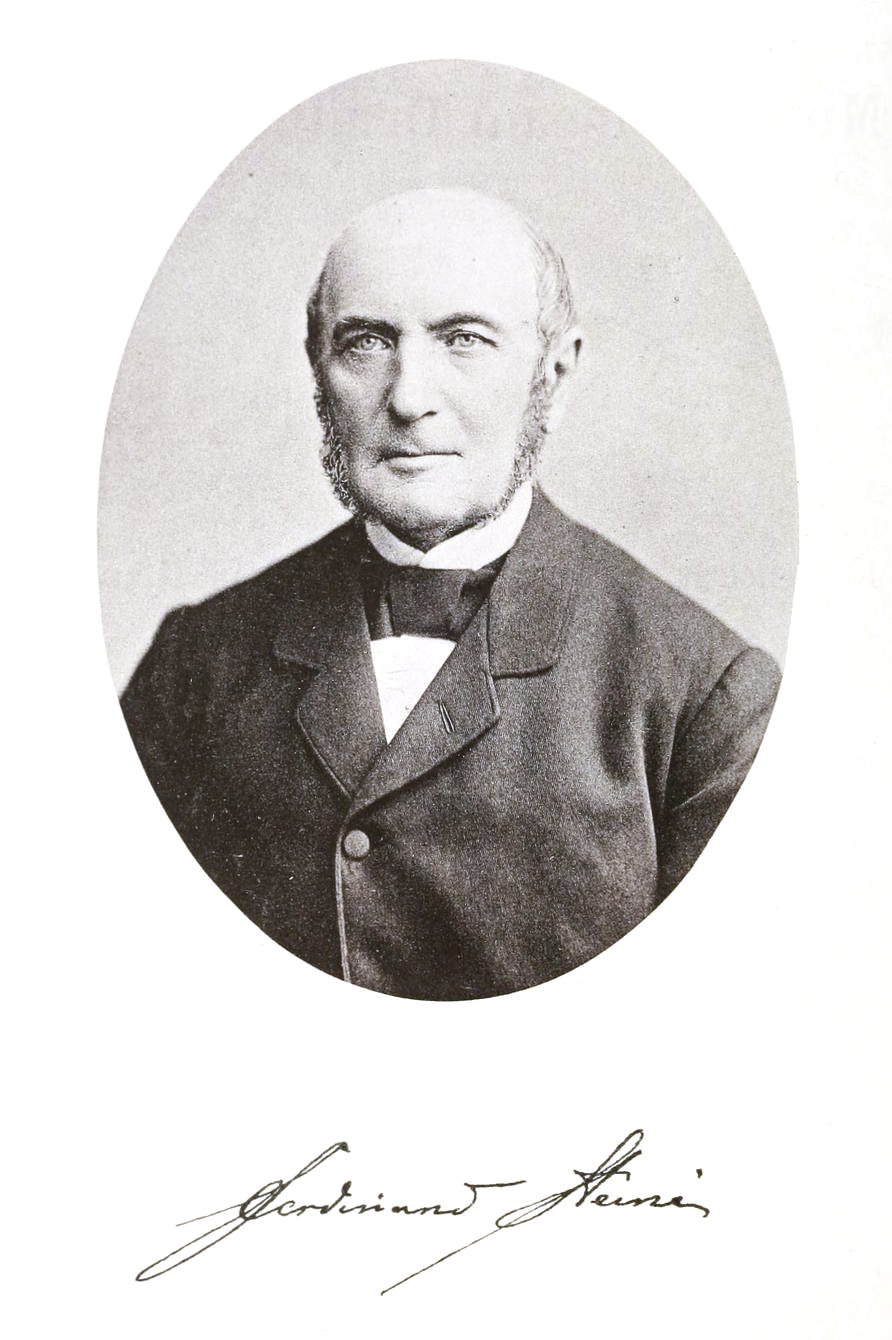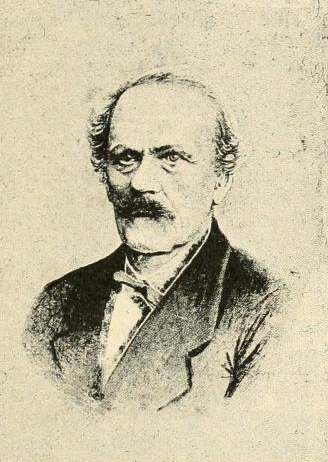|
Ferdinand Heine
Jakob Gottlieb Ferdinand Heine (9 March 1809, in Halberstadt – 28 March 1894) was a German ornithologist and collector. Heine had one of the largest private collection of birds in the mid-19th century. The collection now housed at the Heineanum Halberstadt Museum in Halberstadt (27,000 specimens, 15,000 books).The Eponym Dictionary of Birds by Bo Beolens, Michael Watkins, Michael Grayson wrote about the collection i [...More Info...] [...Related Items...] OR: [Wikipedia] [Google] [Baidu] |
Ferdinand Heine (junior)
Jakob Gottlieb Ferdinand Heine (9 February 1840 – 12 February 1920) was a German ornithologist, agronomist and plant-breeder. Heine was the eldest son of ornithologist Ferdinand Heine (1809–1894). Heine was born in Halberstadt, the eldest of eight children of Julie (1823-78) and Ferdinand Heine. He was educated at the Halberstadt cathedral high school and took an interest in birds from his father. He studied ornithology at Heidelberg briefly but was conscripted into the Prussian army in 1863 and took part in the Battle of Königgrätz. He then obtained an education in agriculture at Mansfeld before taking up the management of his father's estate from 1871. He married Elisabeth Rimpau in 1869. After the Franco-German War he began to breed potato varieties and producing their seeds for cultivation. He was inspired by the work of Pierre Louis François Levéque de Vilmorin. He began to collect sugar beets and breed them from 1879. He established breeding of wheat, barley and oat ... [...More Info...] [...Related Items...] OR: [Wikipedia] [Google] [Baidu] |
Halberstadt
Halberstadt ( Eastphalian: ''Halverstidde'') is a town in the German state of Saxony-Anhalt, the capital of Harz district. Located north of the Harz mountain range, it is known for its old town center that was greatly destroyed by Allied bombings in late stages of World War II after local Nazi leaders refused to surrender. The town was rebuilt in the following decades. In World War I, Halberstadt was the site of a German military airbase and aircraft manufacturing facilities. In World War II, Halberstadt was a regional production center for Junkers aircraft, which also housed an SS forced labor camp. Halberstadt now encompasses the area where the Langenstein-Zwieberge concentration camp existed. Geography Halberstadt is situated between the Harz in the south and the Huy hills in the north on the Holtemme and Goldbach rivers, both left tributaries of the Bode. Halberstadt is the base of the Department of Public Management of the Hochschule Harz University of Applie ... [...More Info...] [...Related Items...] OR: [Wikipedia] [Google] [Baidu] |
Ornithologist
Ornithology is a branch of zoology that concerns the "methodological study and consequent knowledge of birds with all that relates to them." Several aspects of ornithology differ from related disciplines, due partly to the high visibility and the aesthetic appeal of birds. It has also been an area with a large contribution made by amateurs in terms of time, resources, and financial support. Studies on birds have helped develop key concepts in biology including evolution, behaviour and ecology such as the definition of species, the process of speciation, instinct, learning, ecological niches, guilds, island biogeography, phylogeography, and conservation. While early ornithology was principally concerned with descriptions and distributions of species, ornithologists today seek answers to very specific questions, often using birds as models to test hypotheses or predictions based on theories. Most modern biological theories apply across life forms, and the number of scientists ... [...More Info...] [...Related Items...] OR: [Wikipedia] [Google] [Baidu] |
Jean Cabanis
Jean Louis Cabanis (8 March 1816 – 20 February 1906) was a German ornithologist. Cabanis was born in Berlin to an old Huguenot family who had moved from France. Little is known of his early life. He studied at the University of Berlin from 1835 to 1839, and then travelled to North America, returning in 1841 with a large natural history collection. He was assistant and later director of the Natural History Museum of Berlin (which was at the time the Berlin University Museum), taking over from Martin Lichtenstein. He founded the '' Journal für Ornithologie'' in 1853, editing it for the next forty-one years, when he was succeeded by his son-in-law Anton Reichenow. He died in Friedrichshagen. A number of birds are named after him, including Cabanis's bunting ''Emberiza cabanisi'', Cabanis's spinetail ''Synallaxis cabanisi'', Azure-rumped tanager ''Poecilostreptus cabanisi'' and Cabanis's greenbul Cabanis's greenbul (''Phyllastrephus cabanisi''), also known as Cabanis's bulb ... [...More Info...] [...Related Items...] OR: [Wikipedia] [Google] [Baidu] |
Turkestan Short-toed Lark
The Turkestan short-toed lark (''Alaudala heinei'') is a species of lark in the family Alaudidae. It is found in Ukraine and central Turkey through parts of Central Asia and southern Siberia west to south-central Mongolia and south to southern Afghanistan. This species and the Mediterranean short-toed lark (''A. rufescens'') were formerly considered conspecific and called the lesser short-toed lark The lesser short-toed lark has been split into two species: * Mediterranean short-toed lark, ''Alaudala rufescens'' * Turkestan short-toed lark The Turkestan short-toed lark (''Alaudala heinei'') is a species of lark in the family Alaudidae. It ..., but a 2020 study recovered them as distinct species. Subspecies Four subspecies are recognized: * ''A. h. pseudobaetica'' - ( Stegmann, 1932): Found in eastern Turkey, Transcaucasia and northern Iran * ''A. h. heinei'' - ( Homeyer, 1873): Found from Ukraine to eastern Kazakhstan * ''A. h. aharonii'' - (Hartert, 1910): Found ... [...More Info...] [...Related Items...] OR: [Wikipedia] [Google] [Baidu] |
Eugen Ferdinand Von Homeyer
Eugen Ferdinand von Homeyer (11 November 1809 in Nerdin - 31 May 1889 in Stolp) was a German ornithologist. He made early studies of the birds of Pomerania, making collections, and was a staunch anti-Darwinian. Eugen Ferdinand von Homeyer was born in a family belonging to the Prussian nobility. He at first dedicated himself to agriculture on the family farm, with poor health forcing him to drop out of school in Rostock. While on his farm, he began to make scientific observations and establish a collection. In 1840 he married Philippine Ladewig and acquired in 1852 the property Warbelow where he built a landscape park. He sold this after the death of its wife in 1873 and then lived in Stolp, where he dedicated himself to the natural sciences and ornithology. He corresponded with many European ornithologists, and through further collecting and purchase built up an important collection of European bird species. He undertook several expeditions with Alfred Brehm to the L ... [...More Info...] [...Related Items...] OR: [Wikipedia] [Google] [Baidu] |
Fiji Shrikebill
The Fiji shrikebill (''Clytorhynchus vitiensis'') is a songbird species in the family Monarchidae. It is found in American Samoa, Fiji, and Tonga. Its natural habitat is subtropical or tropical moist lowland forests. Taxonomy and systematics The Fiji shrikebill was originally described as belonging to the genus '' Myiolestes''. Alternate names include the lesser shrikebill and uniform shrikebill. Subspecies Twelve subspecies are recognized: * Rotuman lesser shrikebill (''C. v. wiglesworthi'') - Mayr, 1933: Found on Rotuma Island (northern Fiji) * ''C. v. brunneus'' - ( Ramsay, EP, 1875): Found on Kadavu, Ono and Vanua Kula (south-western Fiji) * ''C. v. buensis'' - ( Layard, EL, 1876): Originally described as a separate species in the genus '' Myiolestes''. Found on Vana Levu and Kioa (northern Fiji) * ''C. v. vitiensis'' - (Hartlaub, 1866): Found in western Fiji * ''C. v. layardi'' - Mayr, 1933: Found on Taveuni (central Fiji) * ''C. v. pontifex'' - Mayr, 1933: Found on Qam ... [...More Info...] [...Related Items...] OR: [Wikipedia] [Google] [Baidu] |
Otto Finsch
Friedrich Hermann Otto Finsch (8 August 1839, Warmbrunn – 31 January 1917, Braunschweig) was a German ethnographer, naturalist and colonial explorer. He is known for a two-volume monograph on the parrots of the world which earned him a doctorate. He also wrote on the people of New Guinea and was involved in plans for German colonization in Southeast Asia. Several species of bird (such as '' Oenanthe finschii'', '' Alophoixus finschii'', '' Psittacula finschii'') are named after him as also the town of Finschhafen in Morobe Province, Papua New Guinea and a crater on the moon. Biography Finsch was born at Bad Warmbrunn in Silesia to Mortiz Finsch and Mathilde née Leder. His father was in the glass trade and he too trained as a glass painter. An interest in birds led him to use his artistic skills for the purpose. Finsch went to Budapest in 1857 and studied at the Royal Hungarian University, earning money by preparing natural history specimens. He then spent two years in Russe, ... [...More Info...] [...Related Items...] OR: [Wikipedia] [Google] [Baidu] |
Gustav Hartlaub
Karel Johan Gustav Hartlaub (8 November 1814 – 29 November 1900) was a German physician and ornithologist. Hartlaub was born in Bremen, and studied at Bonn and Berlin before graduating in medicine at Göttingen. In 1840, he began to study and collect exotic birds, which he donated to the Bremen Natural History Museum. He described some of these species for the first time. In 1852, he set up a new journal with Jean Cabanis, the ''Journal für Ornithologie''. He wrote with Otto Finsch, ''Beitrag zur Fauna Centralpolynesiens: Ornithologie der Viti-, Samoa und Tonga- Inseln''. Halle, H. Schmidt. This 1867 work which has handcoloured lithographs was based on bird specimens collected by Eduard Heinrich Graeffe for Museum Godeffroy The Museum Godeffroy was a museum in Hamburg, Germany, which existed from 1861 to 1885. The collection was founded by Johann Cesar VI. Godeffroy, who became a wealthy shipping magnate a few years after the expansion of the trade towards Aust .... A n ... [...More Info...] [...Related Items...] OR: [Wikipedia] [Google] [Baidu] |
Tangara Heinei
The black-capped tanager (''Stilpnia heinei'') is one of the many species of Neotropical bird in the family Thraupidae. It lives in mountains of Ecuador, Colombia and Venezuela year-round. This bird can often be found in open landscapes, alone or in pairs, hiding under branches of trees and bushes. Its natural habitats are subtropical or tropical moist montane forests and heavily degraded former forest. Taxonomy and nomenclature The black-capped tanager was described in 1851, from a type specimen collected in Colombia. It is a member of the genus '' Stilpnia'', in the tanager family, Thraupidae. In Spanish, it is locally called "Tangara gorrinegra" or "Tangara coroninegra". The black-capped tanager is a songbird (Passeriformes). The tanagers are a very diverse group with over 300 species that account for more than 10% of all birds in the Neotropics. The genus name ''Stilpnia'' was proposed in 2016 instead of ''Tangara'' for ''T. heinei'' in order to match the phylogenetic relati ... [...More Info...] [...Related Items...] OR: [Wikipedia] [Google] [Baidu] |
Zoothera Heinei
The russet-tailed thrush (''Zoothera heinei'') is a species of bird in the family Turdidae, closely related to the more widespread Bassian thrush (''Zoothera lunulata''). It is found in eastern Australia and Papua New Guinea. Its natural habitats are temperate forest A forest is an area of land dominated by trees. Hundreds of definitions of forest are used throughout the world, incorporating factors such as tree density, tree height, land use, legal standing, and ecological function. The United Nations' ...s and subtropical or tropical moist lowland forests. References russet-tailed thrush Birds of Queensland Birds of Papua New Guinea russet-tailed thrush Taxonomy articles created by Polbot Taxa named by Jean Cabanis {{Turdidae-stub ... [...More Info...] [...Related Items...] OR: [Wikipedia] [Google] [Baidu] |


.jpg)


